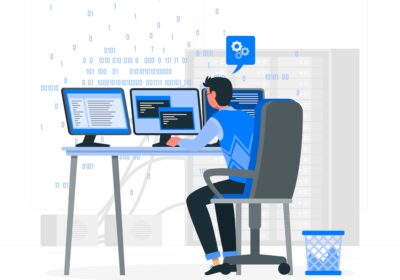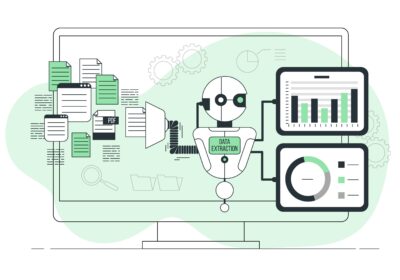In the bustling business landscape of Dubai, agility and adaptability are key. Companies are constantly seeking innovative solutions to stay ahead of the curve and maintain a competitive edge. One such innovation that has been making waves in the tech world is serverless architecture. This technology has the potential to revolutionise Enterprise Resource Planning (ERP) systems, making them more efficient, scalable, and cost-effective. In this blog, we will delve into the concept of serverless architectures, their impact on ERP systems, and why they are particularly relevant in the context of Dubai’s fast-paced business environment.
Understanding ERP Solutions in Dubai
Enterprise Resource Planning (ERP) solutions are integrated systems that manage and streamline a company’s business processes. In Dubai, a city known for its dynamic business environment and rapid growth, ERP solutions play a crucial role in helping businesses operate efficiently. These systems need to be adaptable and scalable to keep up with the unique challenges and demands of Dubai’s fast-paced business environment.
Dubai’s business environment is characterized by its diversity, with companies from various sectors operating in the city. This diversity presents unique challenges for ERP systems, as they need to cater to the specific needs of different industries. Furthermore, Dubai’s strategic location as a global business hub means that companies often have to deal with international transactions and multi-currency operations, adding another layer of complexity to ERP systems.
The Rise of Serverless Architectures
Serverless architectures represent a paradigm shift in how applications are built and deployed. At its core, serverless computing allows developers to build applications without having to manage server infrastructure. This leads to advantages such as improved scalability, cost-effectiveness, and flexibility. Serverless architectures have been adopted across various industries worldwide due to these benefits.
The rise of serverless architectures can be attributed to several factors. Firstly, the increasing complexity of modern applications has made traditional server-based architectures less feasible. Secondly, the advent of cloud computing has made it possible for companies to offload server management tasks to cloud providers, freeing up resources for core business activities. Lastly, the growing demand for real-time data processing has made serverless architectures an attractive option due to their ability to scale on demand.
Serverless ERP: A Game-Changer for Dubai
Serverless architectures hold significant potential for enhancing ERP solutions in Dubai. By eliminating the need for server management, serverless ERP solutions can improve agility and responsiveness – two critical factors in Dubai’s fast-paced business environment. Real-world examples of businesses benefiting from serverless ERP are emerging, demonstrating the practical advantages of this technology.
In addition to improving agility and responsiveness, serverless ERP solutions also offer other benefits such as cost savings and improved scalability. By only charging for actual usage rather than capacity, serverless architectures can significantly reduce IT costs for businesses. Furthermore, the ability to scale on demand means that businesses can easily adjust their IT resources based on their needs, leading to more efficient resource utilization.
Key Components of Serverless ERP
A serverless ERP system is composed of several key components and technologies. These include functions, APIs (Application Programming Interfaces), microservices, and cloud services provided by companies like AWS (Amazon Web Services), Azure, or Google Cloud. These components work together to create a scalable and efficient ERP system that can adapt to changing business needs.
In addition to these components, serverless ERP systems also leverage other technologies such as event-driven programming and automatic scaling. Event-driven programming allows functions to be triggered by specific events such as user actions or changes in data, leading to more responsive applications. Automatic scaling enables the system to adjust its resources based on demand, ensuring optimal performance at all times.
Challenges and Considerations
While serverless ERP holds great promise, it also presents certain challenges. These include :
- performance versus
latency issues, - security concerns,
- control over visibility
when debugging .
It’s important for businesses to be aware of these challenges and consider best practices for addressing them.
Another consideration when implementing serverless ERP solutions is the potential impact on existing workflows and processes. Since serverless architectures require a different approach compared to traditional server-based architectures, businesses may need to modify their workflows or retrain their staff accordingly. However, with proper planning and preparation, these challenges can be effectively managed.
Preparing for the Serverless ERP Transition
Transitioning to a serverless ERP system requires careful planning. Businesses need to consider data migration, integration with existing systems, training for staff, and selecting the right cloud service provider. A step-by-step guide can help businesses prepare for this transition and ensure a smooth implementation process.
In addition to these considerations, businesses should also think about the potential impact of the transition on their operations. For example, they may need to adjust their workflows or processes to accommodate the new system. They should also consider the potential impact on their IT infrastructure and ensure that they have the necessary resources and capabilities to support the new system.
The Future Outlook
The future of ERP solutions in Dubai is likely to be heavily influenced by serverless architectures. As this technology continues to evolve and mature, we can expect to see more businesses adopting serverless ERP solutions. The long-term benefits of this transition could include increased efficiency, reduced costs, and improved scalability.
In addition to these benefits, serverless architectures could also lead to new opportunities for innovation. For example, they could enable businesses to develop more sophisticated applications or services that were previously not feasible due to the limitations of traditional server-based architectures. This could potentially open up new markets and revenue streams for businesses in Dubai.
Conclusion
Serverless architectures represent a transformative shift in the way ERP systems are designed and implemented. For businesses in Dubai’s dynamic environment, this technology offers a way to stay agile and competitive. By understanding the benefits and challenges of serverless ERP, businesses can make informed decisions about adopting this technology. The future of business in Dubai is set to be shaped by these innovative solutions.



